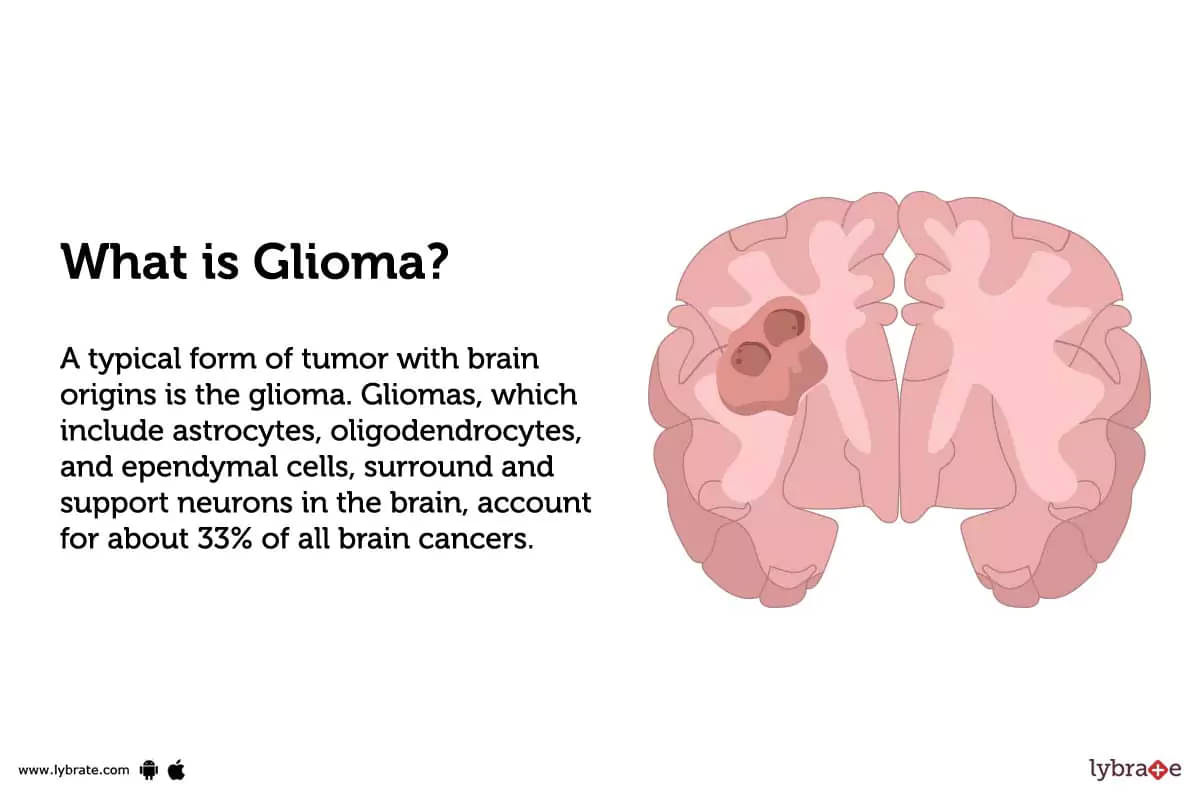Glioma: Treatment, Procedure, Cost And Side Effects
Last Updated: Jul 06, 2023
What is Glioma?
A typical form of tumor with brain origins is the glioma. Gliomas, which include astrocytes, oligodendrocytes, and ependymal cells, surround and support neurons in the brain, account for about 33% of all brain cancers.
Gliomas, also known as intra-axial brain tumours, usually form within the substance of the brain and merge with healthy brain tissue.
Summary- In simple words, glioma refers to tumors originating from the brain.
What are the types of Glioma?
Different forms of Gliomas are:
- Astrocytomas, such as glioblastoma and anaplastic astrocytoma.
- Ependymomas, including subependymomas, anaplastic ependymomas, and ependymomas of the myxopapillary type.
- Oligodendrogliomas, such as oligodendrogliomas, anaplastic oligodendrogliomas, and anaplastic oligoastrocytomas.
Summary- The types of gliomas include: astrocytomas, oligodendrogliomas and ependymomas.
What are the symptoms of Glioma?
The signs and symptoms of gliomas might differ depending on the type of tumour, its size, and its location.
Glioma symptoms include:
- Headache
- nausea
- confusion
- Irritation
- vision issues
- speech impediments
- Seizures
- frequent urge to urinate
- memory problems
Summary- The most common symptoms of glioma are: nausea, diarrhea, seizures, headache and vision issues.
What are the causes of Glioma?
Glioma doesn't have a clear cause. Although they can happen to anyone, they tend to adult patients more often. Gliomas are slightly more common in men than in women.
Summary- The main cause of glioma is still not known.
What are the risk factors of glioma?
Some of the risk factors of glioma are:
Age:
Your likelihood of getting a brain tumour increases with age. Adults with gliomas often range in age from 45 to 65. A brain tumor, however, can develop at any age.
Glioma running in the family:
The occurrence of glioma running in families is infrequent. However, your risk of developing glioma may be raised if your family has a history of the disease. Weak associations between several genes and glioma have been found.
Radiation exposure:
Brain tumour development is more frequent in people who have been exposed to ionising radiation. The risk of glioma has not been demonstrated to be increased by more prevalent types of radiation like radiofrequency radiation from microwave ovens and electromagnetic fields from power lines.
Summary- The risk factors of glioma are: family history, age and radiation.
How Glioma is diagnosed?
Ways to diagnose Glioma are:
Examining the patient's physical condition and asking about their symptoms as well as their personal and family medical histories.
A neurological examination measures a person's strength, sensation, balance, coordination, reflexes, hearing, speech, vision, and memory.
The most frequent scans used to identify brain cancers are computed tomography (CT or CAT scan) and magnetic resonance imaging (MRI), which use computers to produce precise images of the brain.
A biopsy is a technique where a small sample of the tumor is removed for microscopic analysis. The biopsy and tumor removal may be done simultaneously, depending on the tumor's location.
Summary- A physical examination, a CT scan, an MRI, and a biopsy can all be used to diagnose glioma.
When to see a doctor for Glioma?
You should see your doctor if you encounter any of the symptoms and indications associated with gliomas.
Summary- You should see your doctor, immediately after you detect the symptoms of glioma.
What are the treatments of Glioma?
Treatments for Glioma are:
Surgery:
The most frequent initial therapy for gliomas is surgery, which calls for a craniotomy. If the tumor is close to significant brain regions, intraoperative MRI or intraoperative brain mapping may be used. To ease pressure on the brain, tumor tissue may also be removed during surgery.
Radiation Therapy:
Gliomas can be treated with one of three different types of radiation therapy:
- radiotherapy using an external beam
- Stroboscope-assisted radiosurgery
- Internal radiation
Chemotherapy:
After surgery and radiation therapy, some high-grade gliomas require chemotherapy, which may include wafers and targeted therapy.
- conventional or systemic chemotherapy
- Wafers for chemotherapy
- Targeted treatment
Summary- Glioma can be treated by surgery, radiation therapy, chemotherapy and medications.
What is the price of Glioma treatment in India?
In India, brain tumor surgery typically costs between Rs. 2,50,000 and Rs. 7,50,000.
Summary- Glioma treatment in India may cost up to Rs 750000.
Conclusion
In the brain and spinal cord, glioma tumours of a particular type can manifest. Gliomas can develop anywhere in the neurological system, including the brain stem and spinal column, as well as in the brain. Different symptoms are brought on by various glioma kinds. Some of these include migraines, convulsions, agitation, nausea, vision problems, and weakness or numbness in the extremities. Targeted molecular therapy, surgery, chemotherapy, and radiation therapy are all available as treatment options.
References
- Glioma- Mayo Clinic [Internet]. mayoclinic.org 2018 [Cited 31 July 2019]. Available from:
- Gliomas- Johns Hopkins Medicine [Internet]. hopkinsmedicine.org 2019 [Cited 31 July 2019]. Available from:
- Some Specific Brain Tumors- Merck Manual Consumer Version [Internet]. merckmanuals.com 2018 [Cited 31 July 2019]. Available from:
Table of content
15+ Years of Surgical Experience
All Insurances Accepted
EMI Facility Available at 0% Rate
Find Oncologist near me
Ask a free question
Get FREE multiple opinions from Doctors


